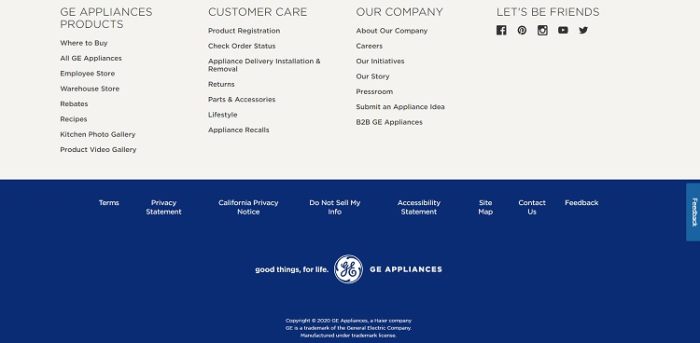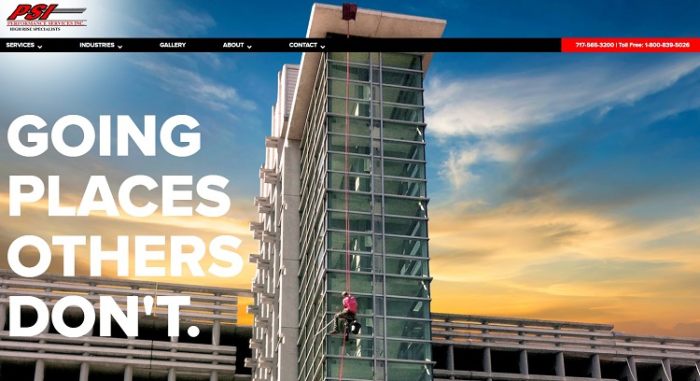Business-to-business (B2B) companies need a website geared to the needs of their corporate clients. While business-to-consumer (B2C) sites have a broader appeal to reach different buyer personas, B2B pages must be on-point with a particular list of potential clients.
Statista reports rapid growth in online B2B e-commerce solutions in the last few years. In 2019, B2B gross merchandise volume (GMV) grew to $12.2 trillion, up from 5.83 trillion just six years prior. Commerce is becoming more digitized across all sectors, including companies serving other businesses.
However, B2B companies have different needs than B2C. You can’t use a template meant for consumers and expect it to fulfill business owners’ needs. There are some particular things to pay attention to in your B2B website’s design.
Do’s of B2B Web Design
In addition to the elements of excellent web design apply to any site, there are a few specific things making pages for business owners more usable. Focus on the needs of your clients, and you can’t go wrong.

GE has a section of its website dedicated to business clients. Toward the bottom of the landing page, there is a section titled “Let’s Be Friends.” It then links to its social media pages on Facebook, Pinterest, Instagram, YouTube, and Twitter.
Do: Show What You Can Do
You’ve worked hard to become the top dog in your area. Your website is your opportunity to showcase what you’re capable of. Use a huge hero shot of one of your projects. Add customer testimonials about challenges you’ve helped other business owners overcome. Look for ways to show why you are the best in your field and the only choice for clients.

Performance Services Inc. adds a beautiful hero shot to its homepage. You can see the level of skill involved in the work it does in cleaning, repair, restoration, and maintenance services for businesses and organizations. It adds the tagline “Going Places Others Don’t” to show the level of commitment to its clients’ needs. The combination of the hero image and the headline bring home a strong message.
Do: Know Your Goal
Each page on your website must have a particular goal geared toward your audience. Once you know the objective for the page, remove anything not moving users toward it. Cut as much clutter as possible. Keep things simple but provide enough information for customers to decide whether they want to do business with you.
Everything on your site should move users toward the action you want them to take. The call to action (CTA) button is one of the most critical elements on your landing page. Make sure it contrasts with the rest of the items and has a clear language.

Fathom offers manufacturing and 3D printing. Its page is streamlined toward the specific services it provides. Note the bright yellow CTA in the top left corner inviting users to “Get a Quote.” The color contrasts with the rest of the design and draws the attention of site visitors. The words explain the next step in the process to potential customers.
Numerous elements make a website have a good user experience (UX). If you start with these three points, your site will stand out from most other B2B presences.
Don’ts of B2B Web Design
Just as there are some do’s for excellent website design, there are some things you should avoid. Here are our top three don’ts.
Don’t: Avoid Sharing Information.
In the interest of keeping your homepage uncluttered, you may err on the side of not providing enough information. Your site visitors need enough detail to decide if they want to utilize your products or services. One way to overcome the issue of endless lines of text is to create an informational video to share on your home page.
Don’t: Forget Credibility.
When a user lands on your page, they may have never heard of your brand. They have no reason to trust you’ll do a stellar job for them. They are putting their business and their livelihood at your mercy in some cases. They need to know they can trust you.
Some trust elements that up your reliability factor include reviews, testimonials, and sharing your brand story. People want to know why you started your business and what your philosophy is.
Don’t: Ignore Basic Design.
Graphic designers study for years to learn the elements of good design. There is a flow to how to organize pages, what colors work well together, and how the little UX details make a site stand out. If you aren’t skilled in web design, hire someone who is to give your pages the expert edge. Would you want to do business with a company that couldn’t be bothered to create a professional-looking website?
One way you can avoid some of the pitfalls of B2B website design is by conducting A/B testing. When you add a new detail, see how your target audience responds. Get rid of what doesn’t work and add what does.
Focus on Your Online Presence
Your website is the face of your brand on the internet. Present it as professionally as you would an office space or any other interaction you have with customers. Look for ways to personalize the experience for your target audience. With a little attention to detail and ongoing efforts, your B2B website should bring you new leads.


